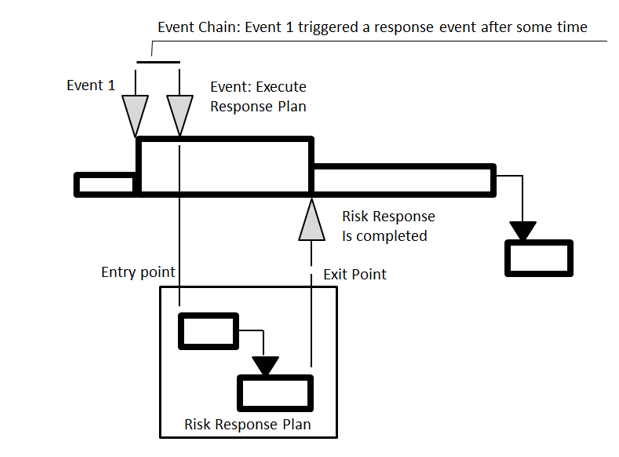Risk response efforts are events, which are executed if an activity is in an excited state. Risk response events may attempt to transform an activity from excited state to the ground state.
If an event or event chain occurs during a project, it may require risk response efforts. In some cases, risk response plans can be created. Risk response plans are an activity or group of activities (a small schedule) that augments the project schedule if a certain event occurs. Risk response plans can be defined as a part of the original project schedule and only executed under certain conditions. However, in these cases, the project schedule may become very convoluted due to multiple conditional branches, which significantly complicates the analysis. Event chain methodology offers a solution: assign the risk response plan to an event or event chain. These small schedules are executed only when an event or event chain occurs.
The same risk response plan can be used for different events. For example, the events “Change requirements” and “Delay with component delivery” may execute the same risk response plan (group of activities) “Update original design”. If both events occur together, this risk response plan will only be executed once.
Each response plan has an entry point and exit point as shown below. As a result, the original project schedule, and the project schedule with simulation results (with risks and uncertainties) are different. With risk response plans, we can have an event chain with three events:
- Original Event which triggers a response
- Event “Execute Response Plan”, which executes a group of activities
- Event “Risk Response is completed”. It can be depicted as an opportunity because it moves activities to lower excited state.


